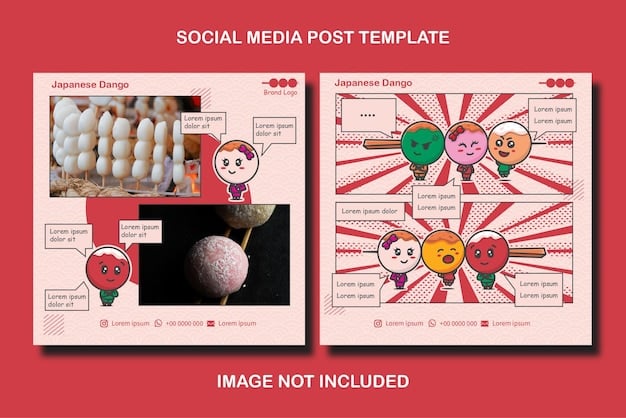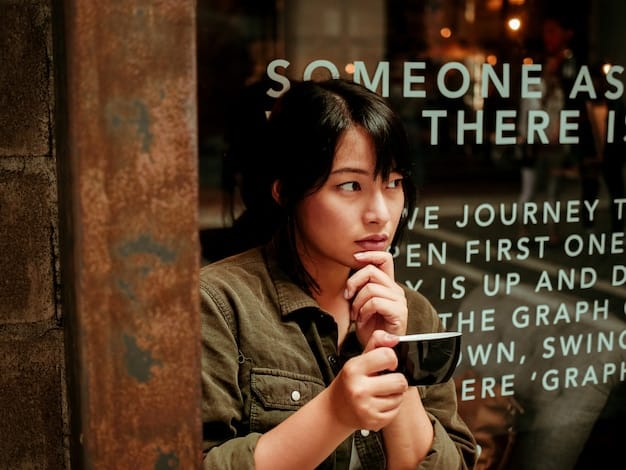Korean Drama Vocabulary: 20 Phrases to Enhance Your Viewing

Korean drama vocabulary is essential for understanding the nuances of K-dramas; learning 20 essential phrases can significantly enhance your viewing experience, allowing you to connect more deeply with the characters and stories.
Want to immerse yourself fully in the world of Korean dramas? Learning key **Korean drama vocabulary: Learn 20 essential phrases to enhance your viewing experience** is like unlocking a secret code, allowing you to understand the characters’ emotions and the cultural context behind the stories.
Why Learn Korean Drama Vocabulary?
Korean dramas, or K-dramas, have captured the hearts of viewers worldwide. But beyond the captivating storylines and charismatic actors, there’s a rich layer of language and culture that can be unlocked by learning some basic Korean. Understanding **Korean drama vocabulary** brings you closer to the authentic experience.
Learning a few key phrases not only enhances your viewing pleasure but also provides a deeper appreciation for Korean culture and the nuances often missed in translation. It’s about connecting with the characters on a more emotional and intellectual level.
The Benefits of Knowing Key Phrases
Knowing some common phrases elevates your experience by bridging cultural gaps. You start noticing subtle cues and intentions that are sometimes lost in translation.
- Understanding emotional nuances more directly.
- Appreciating the honorific system embedded in the language.
- Gaining a more authentic understanding of Korean culture.
By understanding the cultural context, you’ll be able to appreciate the jokes, the family dynamics, and the unspoken rules that drive the characters’ on-screen behavior.

Essential Greetings and Introductions
When diving into any new language, mastering greetings is crucial. In Korean dramas, formal and informal greetings are common, reflecting the social hierarchy and relationships between characters.
These are the phrases you will hear most often. Start with these to lay a base for understanding future, more complex sentences and concepts.
Formal and Informal Greetings
The first greetings you learn will be your go-tos for many occasions. Know how to use them properly!
- 안녕하세요 (Annyeonghaseyo): “Hello.” – a standard, polite greeting suitable for most situations.
- 안녕 (Annyeong): “Hi.” – an informal greeting used among close friends and family.
- 만나서 반갑습니다 (Mannaseo Bangapseumnida): “Nice to meet you.” – A formal greeting often used upon first meeting someone.
Consider greetings as the cornerstone of your understanding. Building a foundation requires familiarizing yourself with basic phrases that will be used in a variety of contexts. This will expand your familiarity and comprehension.
Common Expressions of Gratitude and Apology
Gratitude and apology are essential elements in Korean culture and appear frequently in dramas. Knowing the nuances and levels of politeness can help you understand the relationships between characters.
Whether it’s a slight mishap or a grand gesture, the way characters express thanks or apologize offers insight into their respect for others.
Expressing Thanks and Regret
Showing thanks and expressing regret appropriately is not only a sign of good manners but also shows deference and respect in the eyes of others.
나중에요 (Najungeyo): “See you later.”
수고하세요 (Sugohaseyo): “Keep up the good work.”
Apologetic Phrases
Korean culture tends to be high-context, making phrases expressing regret more impactful.
- 감사합니다 (Gamsahamnida): “Thank you.” – a formal expression of gratitude.
- 고맙습니다 (Gomapseumnida): “Thank you.” – a slightly less formal way to show appreciation.
- 죄송합니다 (Joesonghamnida): “I’m sorry.” – a formal apology used in many commonplace situations.
When people apologize or thank each other, it’s more than just a nicety; it reveals the social dynamics playing out on-screen.
Responding to Questions and Statements
Knowing how to effectively respond to questions and statements is critical for any form of communication. This allows you to show active listening and keep conversations flowing.
Let’s explore key phrases for affirmative and negative responses, and also how to ask basic questions.
Affirmative and Negative Responses
Knowing “yes” and “no” is always a good idea!
- 네 (Ne): “Yes.” – a polite and formal way to agree.
- 아니요 (Aniyo): “No.” – a respectful way to disagree or decline.
Asking Simple Questions
Knowing how to ask questions helps unlock context clues and further comprehension of various situations.
- 뭐 (Mwo): “What?” – used when you didn’t hear or understand something properly.
- 왜 (Wae): “Why?” – used to inquire about a reason or cause.
These exchanges can reveal hidden character dynamics, intentions, and crucial story elements. Being able to recognize these responses allows you to better understand narratives.

Expressions of Love and Affection
Romance is a cornerstone of many K-dramas. Expressions of love, longing, and affection are pivotal in driving the story and engaging viewers.
Let’s familiarize ourselves with phrases that capture the emotional depth often portrayed in these dramas.
Sweet and Heartfelt Declarations
K-dramas often use heartfelt messages to convey love.
- 사랑해 (Saranghae): “I love you.” – informal, yet deeply sentimental.
- 보고 싶어 (Bogo sipeo): “I miss you.” – an emotional expression of longing.
When characters confess their love, the tension can be palpable. These are important moments.
Common Interjections and Exclamations
Interjections add a layer of emotion and authenticity to conversations. In K-dramas, these expressions often capture immediate reactions or highlight specific moments.
Recognizing these can help you to connect more deeply with the characters, as they reflect real emotions and reactions.
Expressing Surprise or Annoyance
When watching K-dramas, you will hear the characters showing their true reactions in surprising ways.
- 아이구 (Aigu): “Oh my!” or “Oops!” – used to express frustration, surprise, or pain.
- 어머 (Eomeo): “Oh my gosh!” – an exclamation of surprise or shock.
Understanding Common Honorifics
Honorifics are a key part of the Korean language, reflecting the hierarchical nature of Korean society. Recognizing and understanding these can provide insight into relationships.
The use of honorifics reflects the respect, age, and social standing of the individuals involved.
Titles Showing Respect
Honorifics are key to showing respect to other characters. Titles can communicate specific relations between people, which can be key to understanding the plot.
- 오빠 (Oppa): “Older brother” – used by females to address older males they are close to.
- 언니 (Unni): “Older sister” – used by females to address older females they are close to.
- 형 (Hyeong): “Older brother” – used by males to address older males they are close to.
- 누나 (Nuna): “Older sister” – used by males to address older females they are close to.
When addressing elders or superiors, always use appropriate honorifics to show respect. Characters often establish their relationships through these terms, so they serve as important identifiers.
| Key Concept | Brief Description |
|---|---|
| 👋 Greetings | Learn basic greetings like 안녕하세요 (Hello) and 안녕 (Hi). |
| 🙏 Gratitude | Master phrases like 감사합니다 (Thank you) to show appreciation. |
| ❤️ Affection | Use 사랑해 (I love you) to understand romantic scenes better. |
| 🗣️ Interjections | Recognize 아이구 (Oh my!) for authentic reactions. |
Frequently Asked Questions
▼
Learning phrases from dramas allows you to connect with characters and stories on a deeper level. You’ll better grasp cultural nuances and emotions of characters instead of relying on translations.
▼
Knowing basic greetings will help you recognize relationships and social hierarchies in the drama. It helps you to contextualize scenes and actions between characters.
▼
Honorifics are titles that show respect in Korean and understanding them unveils social dynamics and etiquette in drama plots. Pay attention to how characters address each other.
▼
Interjections such as “Aigo” and “Eomeo” help show raw emotions like frustration and surprise. They are quick and genuine responses heard in everyday conversations which makes them useful to know.
▼
Absolutely. As you learn these Korean phrases, you will become immersed in Korean culture, customs, social norms. You’ll gain a deeper appreciation and connection overall to Korea.
Conclusion
Learning these **Korean drama vocabulary** phrases opens a door to a more immersive and authentic viewing experience. By understanding these essential words and expressions, you can enhance your appreciation of the story. You’ll also gain key insights into the cultural context and the heartfelt connection that have made K-dramas so popular worldwide.





